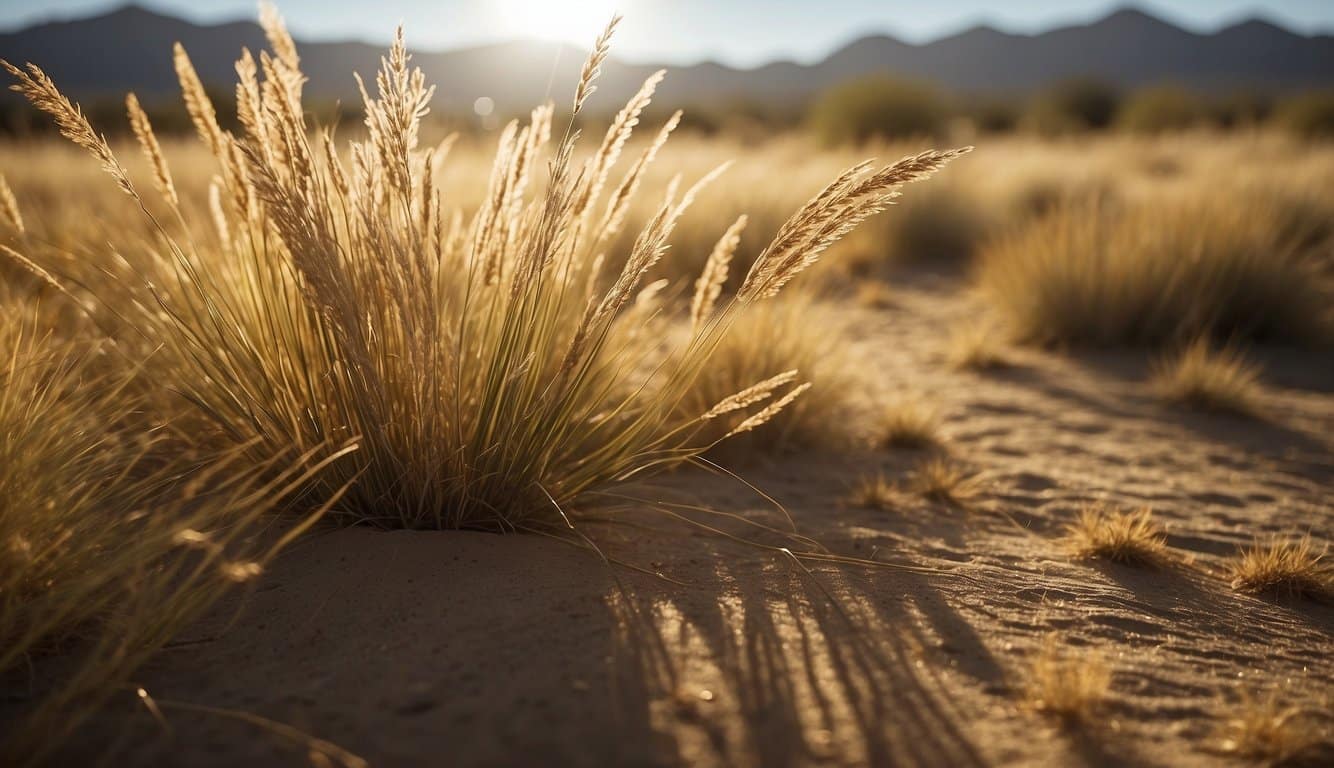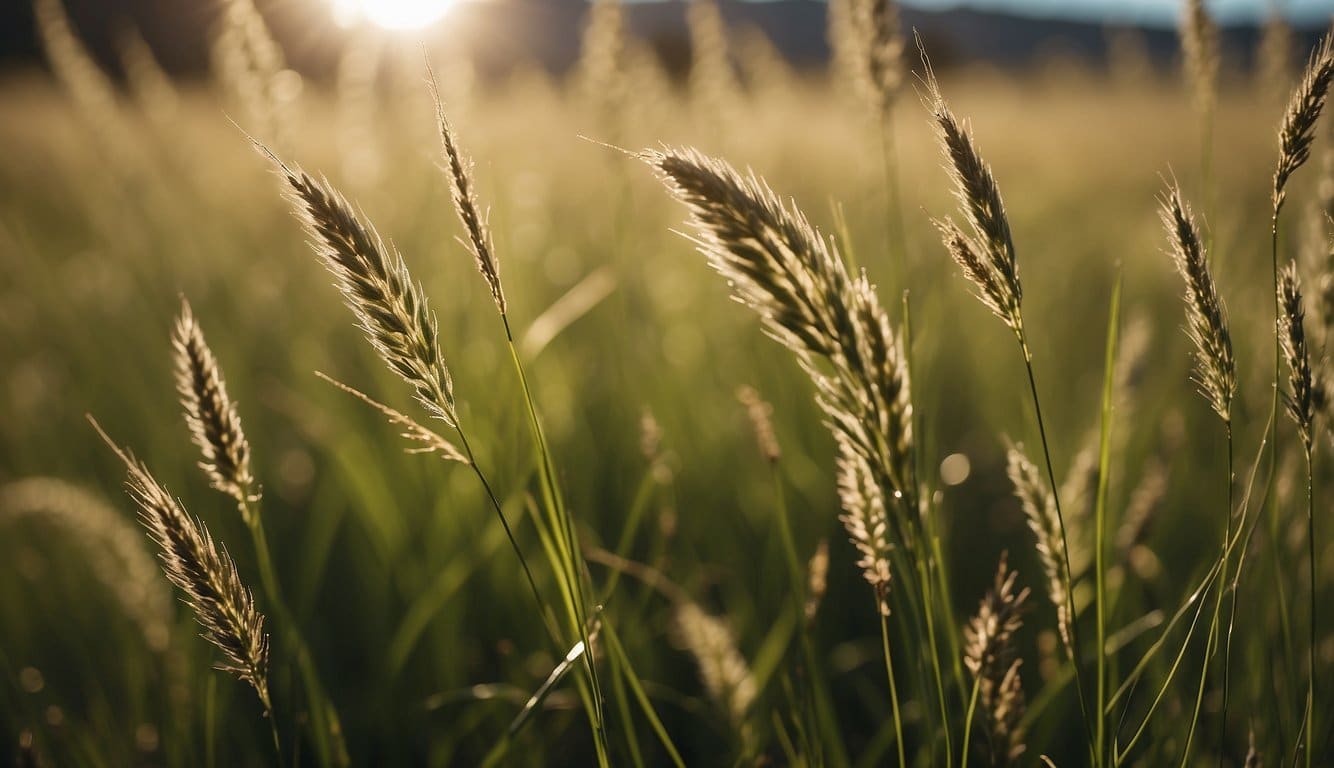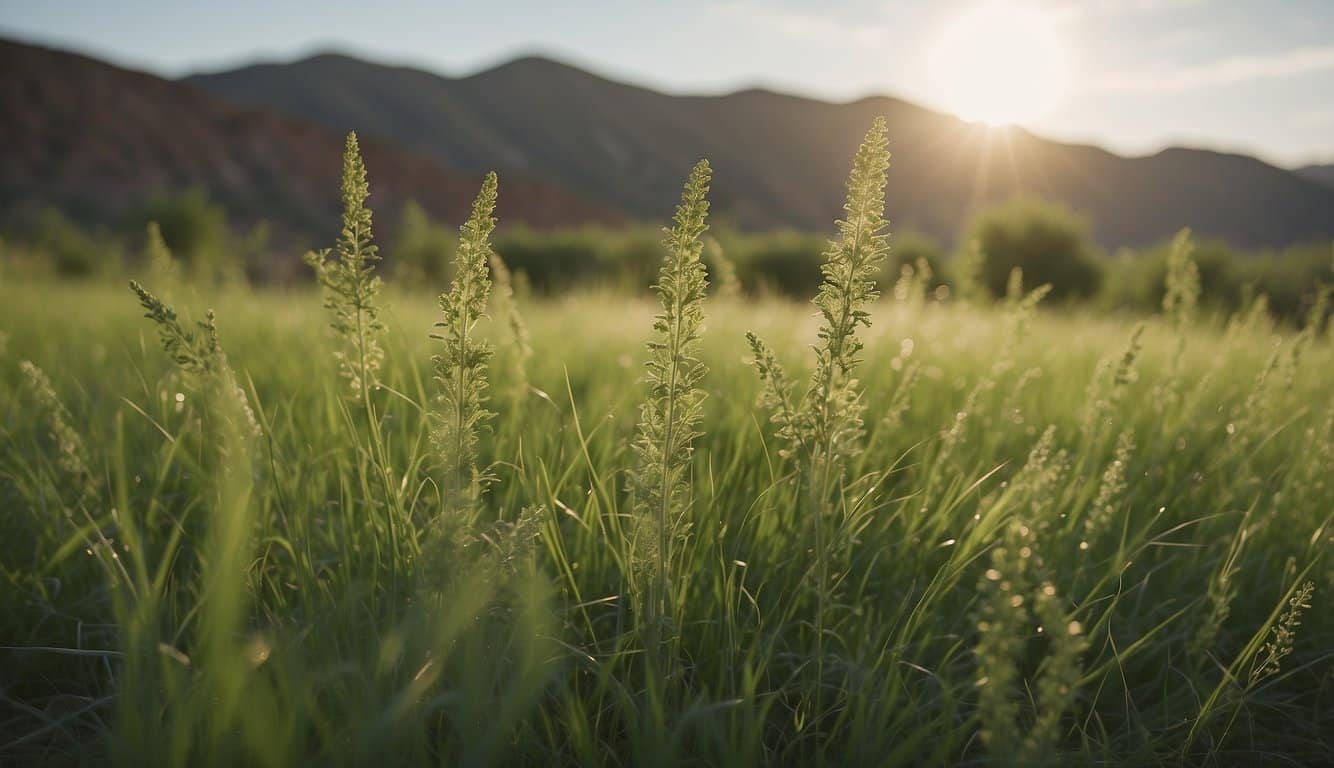New Mexico’s landscapes are richly adorned with a diverse array of grasses, reflecting the state’s unique position at the crossroads of climatic extremes.
From the arid deserts to the high mountain meadows, grass species have adapted to the vast range of environmental conditions present.
Over 480 different kinds of grasses have been identified in New Mexico, each playing a critical role in the state’s ecosystems by providing essential resources for wildlife, stabilizing soil to prevent erosion, and supporting the state’s important agricultural practices.
The identification and classification of these grasses are vital for both ecological understanding and practical management.
Accurate knowledge of grass species allows for informed conservation and restoration efforts, ensuring that native landscapes retain their resilience against environmental stressors.
Furthermore, ranchers and the state’s agriculture industry depend heavily on the health and productivity of native grasslands, which underscores the practical importance of grass identification and management in maintaining the stability of both local economies and ecosystems.
Key Takeaways
- New Mexico is home to a wide variety of grass species that are integral to its diverse ecosystems.
- Knowing the identification and role of these grasses is essential for ecological conservation and agricultural practices.
- Effective grassland management contributes to the state’s economic stability and environmental health.
Diversity of Grasses in New Mexico
New Mexico’s landscape is graced with an extensive variety of grass species, showcasing not just the ecological complexity but also the adaptability of these plants to various climates and terrains.
Over 480 different kinds of grasses thrive in the state, a testament to the rich biodiversity.
Grasses in New Mexico range from the commonly recognized species such as Blue Grama (Bouteloua gracilis) and Black Grama (Bouteloua eriopoda) to the less common yet ecologically significant types like Indian ricegrass (Achnatherum hymenoides) and Sideoats Grama (Bouteloua curtipendula).
The state’s varying elevations, from as low as 3,000 feet in southern desert basins to high mountain terrains, create a patchwork of habitats.
The diversity of grasses reflects these environmental gradients, with species uniquely adapted to survive in specific conditions, from drought-tolerant varieties that flourish in arid regions to those that prefer the moist, cooler climates found at higher altitudes.
| Common Grass Types | Preferred Habitat | DistinctiveTraits |
|---|---|---|
| Blue Grama | Arid plains | Drought-resistant |
| Black Grama | Desert grasslands | Short, tufted form |
| Indian Ricegrass | Sandy soils | Tolerates poor soils |
| Sideoats Grama | Various terrains | Decorative seed heads |
Researchers, enthusiasts, and professionals often utilize guides and taxonomic descriptions to study and identify these grasses — a challenging but rewarding endeavor.
New Mexico’s grass species are not only important for the ecological health but also for the agricultural and rangeland communities, playing a crucial role in sustaining livestock and wildlife alike.
Ecological Roles and Habitats
Grasses play an indispensable role in New Mexico’s varied landscapes. These resilient plants offer stability to soil, support wildlife, and contribute to the distinct ecological characteristics of each habitat type.
Desert and Arid Grasslands
Desert and arid grasslands span across areas of southern New Mexico, with grasses providing essential food and cover for wildlife in these regions.
These grasslands are home to species such as black grama (Bouteloua eriopoda) and blue grama (Bouteloua gracilis), which are well-adapted to the low water availability and high temperatures.
- Common Species:
- Black grama
- Blue grama
- Characteristics:
- Drought-tolerant
- Key for soil stabilization
Mountain and Forested Areas
In contrast, the mountain and forested areas of New Mexico present a distinct set of grass species that thrive in cooler, more moist conditions compared to their desert counterparts.
Grasses such as Arizona fescue (Festuca arizonica) and mountain muhly (Muhlenbergia montana) are dominant in higher elevations, serving as important contributors to the local water cycle by helping to maintain watershed health.
- Common Species:
- Arizona fescue
- Mountain muhly
- Role:
- Water cycle regulation
- Habitat for mountain wildlife
Riparian Zones
Riparian zones are another critical habitat where grasses play a functional role.
They are found along waterways and are characterized by the presence of moisture-loving grasses such as Alkali Sacaton (Sporobolus airoides) and Saltgrass (Distichlis spicata).
These grass species are adapted to fluctuating water levels and contribute significantly to the filtration and purification of water, as well as to bank stabilization, which mitigates the impact of floods.
- Common Species:
- Alkali Sacaton
- Saltgrass
- Functions:
- Water purification
- Flood impact mitigation
Identification and Classification
The pursuit to understand grasses in New Mexico is enriched by detailed approaches to identification and classification that hinge on anatomical characteristics and genetic markers. These scientific processes are crucial to categorize the state’s wide variety of grass species.
Anatomical Characteristics
Grass identification often begins with examining key structural features. These features include:
- Leaf blade: The shape, size, and edge characteristics.
- Ligule: A small outgrowth at the junction of the leaf and leaf sheath.
- Auricles: Claw-like projections, if present, at the base of the leaf blade.
- Inflorescence: The arrangement of flowers on the stem, which varies greatly among species.
Illustrations and keys in field guides are instrumental in distinguishing over 460 types of grasses in New Mexico. They dissect the complexity of grass parts into understandable segments, allowing for accurate identification.
Genetic Markers
Genetic analysis serves as a definitive tool for classifying grasses, especially when anatomical characteristics are inconclusive.
Molecular techniques, such as DNA sequencing, provide insight into the genetic makeup of a species.
Genetic markers can reveal:
- Phylogenetic relationships: The evolutionary connections between different grass species.
- Taxonomic clarity: Resolving ambiguities in species identification when morphology alone is insufficient.
Scholarly research often leverages genetic markers to fine-tune the understanding and categorization of New Mexico’s diverse grass populations. This genetic information complements traditional morphological keys, creating a robust framework for grass classification.
Conservation and Restoration Efforts
In New Mexico, conservation and restoration of grasslands encompass multifaceted approaches aimed at protecting native species and managing invasive species. These efforts ensure the survival of vital ecosystems and maintain the natural beauty of the region’s landscapes.
Native Species Protection
In an effort to preserve its natural heritage, New Mexico has implemented various strategies to protect its native grassland species.
Organizations like The Nature Conservancy are active in establishing protected areas that span millions of acres. This includes working across the U.S.-Mexico border to create and manage these areas effectively.
New Mexico’s native grasses play a key role in soil stabilization and water conservation, which makes their protection a high priority.
- Protected Areas Established:
- Across Borders: Collaboration with Mexico
- Acreage Involved: Over 6.2 million acres
Invasive Species Control
Controlling invasive species is essential for the health of New Mexico’s grasslands.
The Bureau of Land Management (BLM) is one entity that targets invasive plants like mesquite through measures such as herbicide treatments.
These treatments not only aid in restoring native vegetation but also help in increasing fire resiliency, thanks to funds from initiatives like the Inflation Reduction Act.
- Herbicide Treatment Locations:
- Primary Target: Mesquite
- Area of Focus: Dona Ana County
- BLM Funding: $7.6 million from the Inflation Reduction Act for fire resiliency and native vegetation protection
Frequently Asked Questions
Navigating the diverse grasses of New Mexico requires understanding the native species, their identification, and how to cultivate them. This section addresses common queries to guide enthusiasts and homeowners.
What are the common native grasses found in New Mexico?
In New Mexico, the native grasses include species such as blue grama, sideoats grama, and black grama. These grasses are adapted to the local climate and are commonly found in the wild landscapes of the state.
How does one identify the different grasses native to New Mexico?
Identification can be achieved through field guides that provide detailed descriptions and images. Keys included in such guides allow for accurate identification by examining characteristics such as leaf blade shape, seed head structure, and growth patterns.
What are the best types of grass to plant in Southern New Mexico?
In the warmer climate of Southern New Mexico, warm-season grasses such as bermudagrass and buffalograss tend to thrive.
These species are well-suited for areas with hot summers and mild winters.
Can you provide information on perennial grass species in New Mexico?
Perennial grass species, including varieties like blue grama, sideoats grama, and perennial ryegrass, are prevalent in New Mexico.
They come back year after year and adapt well to the state’s varied environmental conditions.
Where can one purchase native grass seeds suitable for New Mexico climates?
Local nurseries and agricultural supply stores often carry seeds suitable for New Mexico climates.
One can also source seeds from regional plant sales or cooperative extension services dedicated to native plant propagation.
Is lawn grass commonly found in urban areas like Albuquerque?
Urban areas like Albuquerque typically foster lawns with a mixture of cool-season and warm-season turfgrasses.
These may include Kentucky bluegrass, tall fescue, and fine fescues, which are managed to withstand varied urban conditions.




